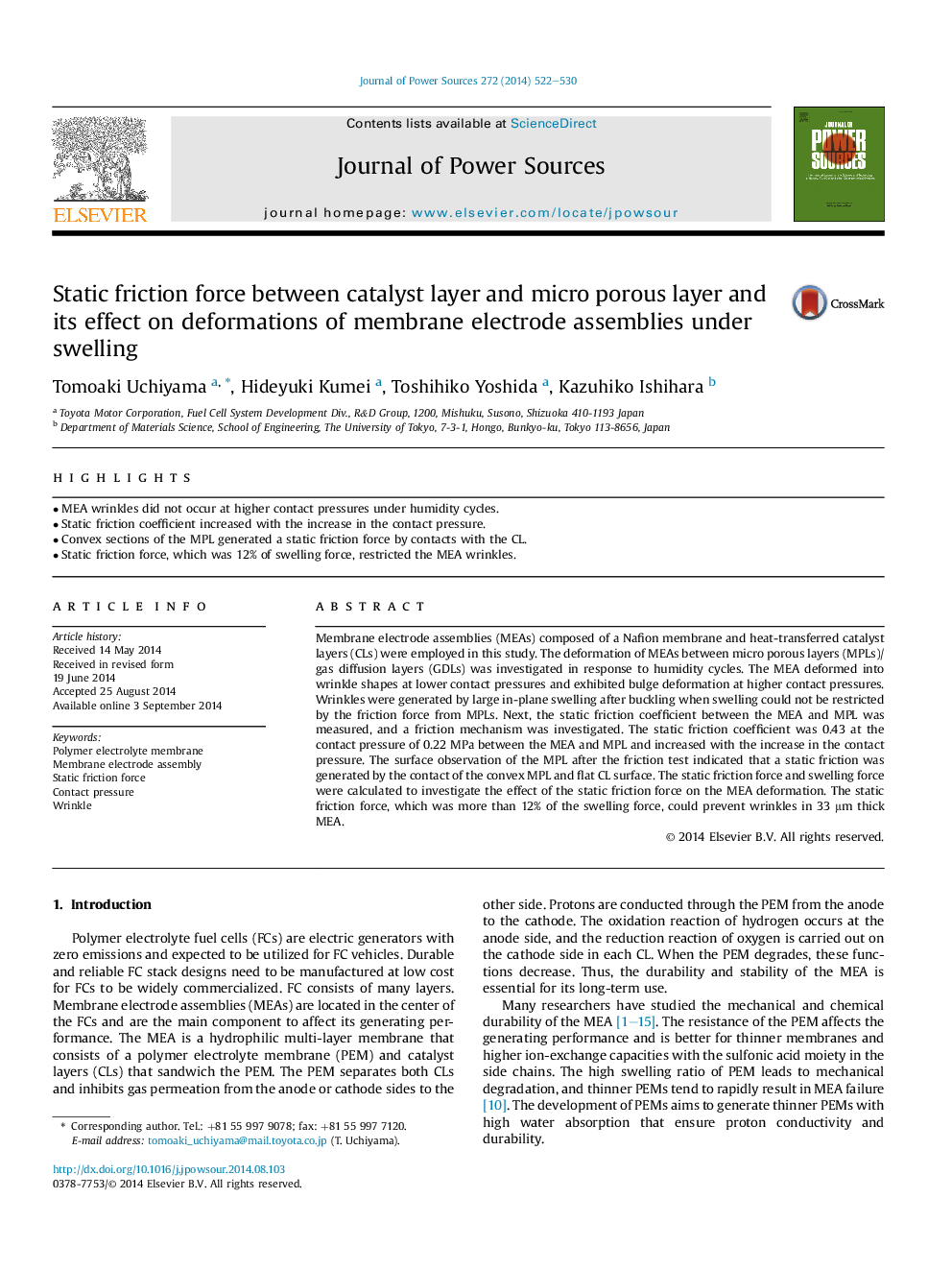| Article ID | Journal | Published Year | Pages | File Type |
|---|---|---|---|---|
| 1283945 | Journal of Power Sources | 2014 | 9 Pages |
•MEA wrinkles did not occur at higher contact pressures under humidity cycles.•Static friction coefficient increased with the increase in the contact pressure.•Convex sections of the MPL generated a static friction force by contacts with the CL.•Static friction force, which was 12% of swelling force, restricted the MEA wrinkles.
Membrane electrode assemblies (MEAs) composed of a Nafion membrane and heat-transferred catalyst layers (CLs) were employed in this study. The deformation of MEAs between micro porous layers (MPLs)/gas diffusion layers (GDLs) was investigated in response to humidity cycles. The MEA deformed into wrinkle shapes at lower contact pressures and exhibited bulge deformation at higher contact pressures. Wrinkles were generated by large in-plane swelling after buckling when swelling could not be restricted by the friction force from MPLs. Next, the static friction coefficient between the MEA and MPL was measured, and a friction mechanism was investigated. The static friction coefficient was 0.43 at the contact pressure of 0.22 MPa between the MEA and MPL and increased with the increase in the contact pressure. The surface observation of the MPL after the friction test indicated that a static friction was generated by the contact of the convex MPL and flat CL surface. The static friction force and swelling force were calculated to investigate the effect of the static friction force on the MEA deformation. The static friction force, which was more than 12% of the swelling force, could prevent wrinkles in 33 μm thick MEA.
